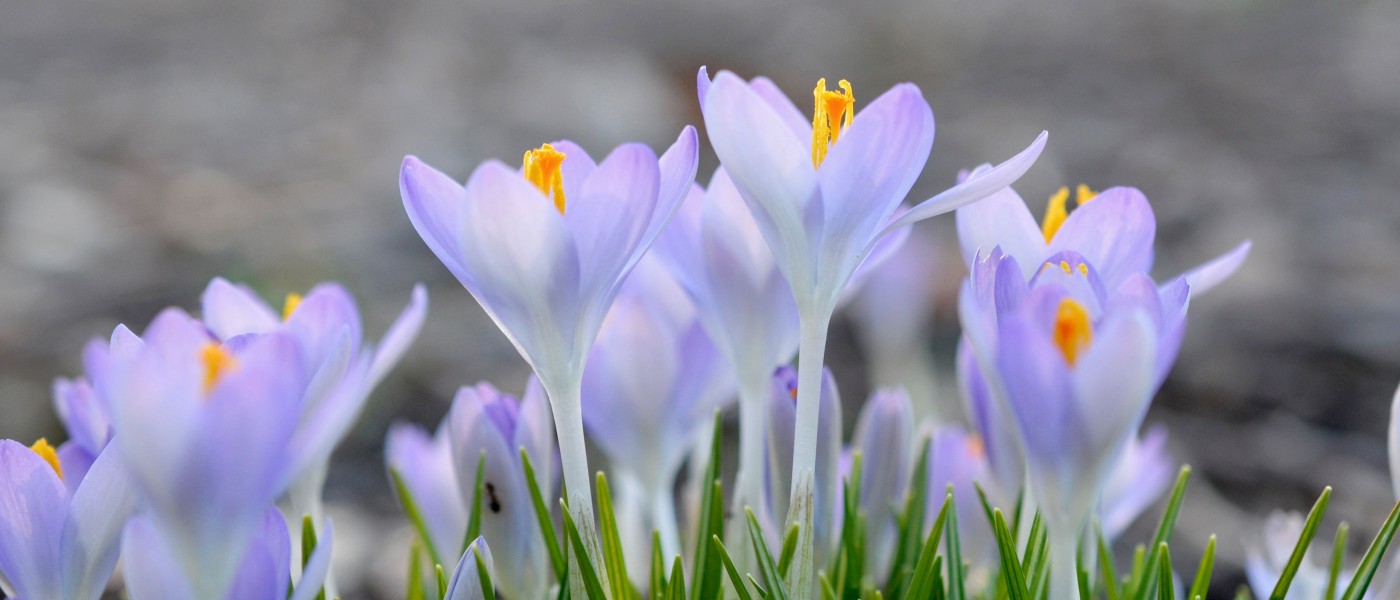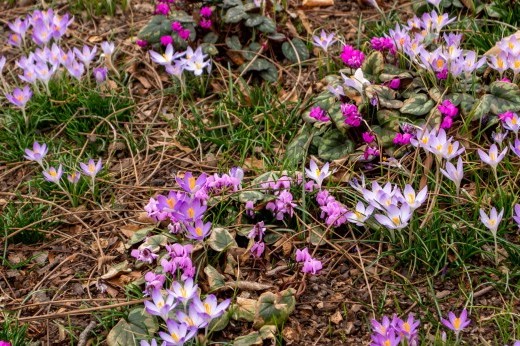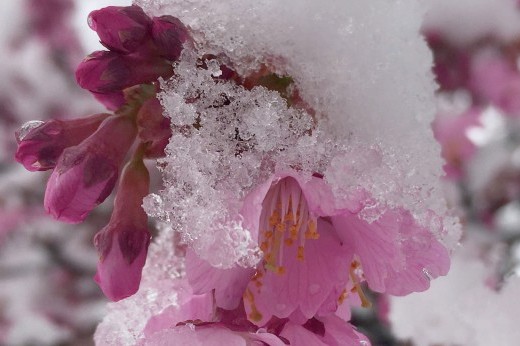In recent years, as winter transitions into early spring, curious New Yorkers have started to inquire: Is [X] plant at BBG blooming early?
Sometimes, the answer is no. Visitors are often surprised to learn that some plants typically flower in winter, like snowdrops, hellebores, winter aconites, witch-hazel, and camellias. It’s also worth noting that there’s no such thing as “exactly on time” in horticulture. Plants have been resisting gardeners’ schedules since there were gardeners (and schedules).
Spring leaf-out and bloom times vary year-to-year, but as a general trend, spring is coming earlier to the Northeast as a result of fossil fuel-driven climate change. Most plants in New York City are leafing out and blooming earlier than they did in the 19th century, a shift that correlates with warmer temperatures between January and April. (In concrete-filled cities like New York, the urban heat island effect also raises temperatures.)
Plants are triggered to bloom by a mix of factors including temperature, day length, sunlight, and humidity. The timing of a flower’s bloom can have significant ecological ripple effects. For example, if a flower blooms before its specialist pollinator emerges, that may affect the plant’s reproduction or the pollinator’s food supply. An early bloom is also more vulnerable to getting knocked out by a late frost.
It’s the weather during the shoulder seasons—spring and fall—that seems to be changing the most at Brooklyn Botanic Garden, says vice president of Horticulture Rowan Blaik. In the last few years, major spring collections have bloomed all at once, scrambling the Garden’s typical schedule.
“We've seen lilacs, cherry blossoms, and early roses all blooming at the same time, when they used to be enjoyed as sequential collections,” says Blaik.
Gardeners are also seeing more abnormal flowering—such as azaleas and lilacs putting out flowers in fall—following late-season heat and drought stress. And the Garden’s operations have had to shift to accommodate an extended growing season and unpredictable weather events, from mowing in February to managing “ferocious” rains that leave blooms in tatters.
The discipline of phenology comes up a lot around questions about bloom times, because phenology is the study of the timing of cyclical biological events—like when plants are leafing out and blooming, or when animals are migrating, mating, or hibernating—and how they are influenced by weather and climate.
The USA National Phenology Network produces First Leaf and First Bloom Indices each year that track the progression of spring across the country. You can check the page as spring approaches in New York to get a sense of how this season’s blooms and leaf-outs compare to other years.
You can also use the iNaturalist app to enter your own phenological observations—like leaf color, buds, or fruits and seeds—at Brooklyn Botanic Garden or other green spaces. These observations will be used in phenological and climate research, so the more participants, the better!
Below are a few popular spring blooms at BBG and when(ish) to expect them.
Crocuses and early-spring bulbs
Crocuses typically bloom in early spring. In Brooklyn, that usually means March, though in the past several years they’ve peaked as early as mid-February. They’re joined around the same time by other early-spring bulbs, like scilla and eastern cyclamen.
Magnolias
Magnolia Plaza at BBG is usually in bloom between mid-March and mid-April. Magnolia blooms are delicate and easily knocked out by late frosts, so BBG staffers cross their fingers each year hoping for a beautiful display.
Cherries
The weeping higan cherries in BBG’s collection typically begin blooming at the end of March, and different flowering cherry varieties bloom progressively through April into early May. At BBG, a stretch of warm weather above 60 degrees or so will often trigger the buds of early-blooming cultivars to appear. Cherry blossoms have been peaking earlier around the world in a shift associated with climate change.
Lilacs
Lilacs typically bloom between mid-April and May. They are traditionally in peak bloom around Mother’s Day in May, though lately they’ve been appearing earlier.
Roses
At BBG, roses typically start blooming in May. The Cranford Rose Garden is usually at its most lush around the last week of May, with a second flush of blooms in early fall.



